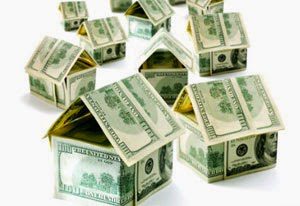After a December that was unseasonably balmy for a large swath of the East Coast, January saw a return to winter norms: frigid temperatures and mountains of snow (even in the drought-parched West, thanks to El Niño). Real estate markets around the country also followed the regular January pattern, according to realtor.com® data: fewer homes on the market, and those that are for sale move like semi-frozen molasses. But just like the seeds that are waiting to sprout once temperatures warm up (hey, is it April yet?), we’re seeing signs that buyers are getting ready to jump into the market this year when the time is right.
“Our initial readings on January affirm the positive growth we expect to see in the residential real estate market in 2016,” says Jonathan Smoke, chief economist of realtor.com. “Our traffic, searches and listing views exhibited the January ‘pop’ we saw last year, which made for a strong spring. In addition, a large number of prospective buyers have been telling us since the second half of 2015 that they plan to purchase in the spring and summer of 2016.”
For now, buyers have fewer choices than they will later in the year, but of course there’s also less competition. Smoke expects listing inventory for January to trend down 7% over December, following the usual winter pattern. The median age of inventory is now 100 days, which means it’s taking homes 6% longer to sell in January than in December, but that’s still 4% faster when compared with January 2015.
The median listing price for January is estimated at $227,000, remaining virtually flat over December, but still up 8% year over year.
By analyzing listing views and age of inventory in the nation’s largest markets, Smoke’s team was able to identify the top 20 that are beating the winter chill. Listings in these markets are viewed two to five times more often than the national average, and houses move 30 to 50 days more quickly than the rest of the U.S. They have also seen days on market drop by a combined average of 7% year over year.
San Francisco retains the first spot this month—again—as California maintains its dominance with seven of the top 10 markets. One surprise: Nashville is the biggest gainer, moving up six spots to end at No. 7. Also, Texas and Florida now feature multiple markets on the list. Overall, Florida real estate markets just keep getting hotter, and the state will give California a run for its money in 2016 as the warm-weather housing market to beat.
The Hot List
1. San Francisco, CA
2. San Jose, CA
3. Dallas, TX
4. Vallejo, CA
5. San Diego, CA
6. Sacramento, CA
7. Nashville, TN
8. Stockton, CA
9. Denver, CO
10. Los Angeles, CA
11. Santa Rosa, CA
12. Oxnard, CA
13. Palm Bay, FL
14. Yuba City, CA
15. Modesto, CA
16. Detroit, MI
17. Midland, TX
18. Santa Cruz, CA
19. Tampa, FL
20. Fort Wayne, IN

